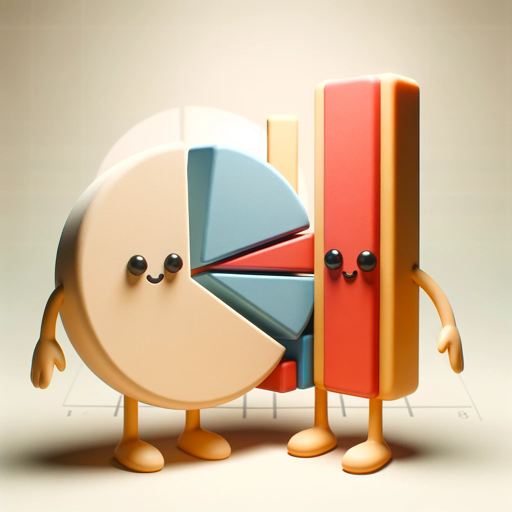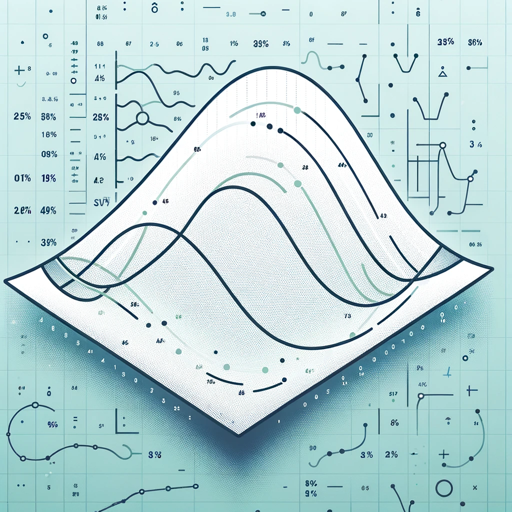Statistical Analysis-advanced data analysis tool.
AI-Powered Statistical Insights
Explain the suitability of a bar graph for this data.
Create a scatter plot adhering to ethical standards.
Verify the accuracy of this pie chart.
Guide me in relevantly visualizing this data set.
How to Create Grade Distribution Chart in Excel and Google spreadsheet
How to Create a Pass or Fail Formula in Excel and Google spreadsheet
How to Calculate Subject Wise Pass or Fail with Formula in Excel and Google spreadsheet
How to count the number of grade failures per student in Excel and Google spreadsheet
Related Tools
Load More
Statistics Stats
🔷#𝟏 𝐏𝐞𝐫𝐬𝐨𝐧𝐚𝐥𝐢𝐳𝐞𝐝 𝐒𝐭𝐚𝐭𝐢𝐬𝐭𝐢𝐜𝐬 𝐓𝐮𝐭𝐨𝐫 𝐚𝐧𝐝 𝐓𝐨𝐨𝐥🔷

Statistic & Data Analyst
Statistic and Data Analyst assistent

Data Analysis - SPSS
Expert in statistical analysis and SPSS, guiding researchers.

Statistics and data analysis
Helps me with queries in regards to stats and data analysis

Statistic Guru
Statistic Guru" is a GPT model specialized in teaching statistics, from inferential to multivariate analysis. Expert in SPSS, AMOS, Jamovi, Jasp and other tools, it's ideal for students, researchers, and professionals needing statistical guidance

Stat Master
Statistician excelling in theory, computation, and real-world analysis.
20.0 / 5 (200 votes)
Introduction to Statistical Analysis
Statistical analysis is the process of collecting, organizing, summarizing, and interpreting data to answer research questions or test hypotheses. It involves the use of various methods and tools depending on the type, size, and purpose of the data. The basic functions include descriptive statistics, inferential statistics, and data visualization. Descriptive statistics help summarize the data's main features, inferential statistics allow for making predictions and testing hypotheses about a population based on sample data, and data visualization aids in the effective presentation of data. For example, a business might use statistical analysis to understand customer satisfaction trends by summarizing survey data (descriptive statistics), predicting future sales based on past trends (inferential statistics), and presenting these insights through charts and graphs (data visualization).

Main Functions of Statistical Analysis
Descriptive Statistics
Example
Calculating the mean, median, and mode of a dataset to summarize its central tendency.
Scenario
A company collects data on employee performance scores. Descriptive statistics help summarize the overall performance, identify any outliers, and provide a clear picture of the distribution of scores across the organization.
Inferential Statistics
Example
Using t-tests or ANOVA to compare the means of different groups and determine if the differences are statistically significant.
Scenario
In a clinical trial, researchers use inferential statistics to compare the effectiveness of a new drug versus a placebo. By analyzing the sample data, they can infer whether the observed differences in patient outcomes are likely to exist in the larger population.
Data Visualization
Example
Creating bar charts, histograms, scatter plots, and dashboards to present data insights.
Scenario
A marketing team uses data visualization to present customer demographics and purchasing behavior trends to stakeholders. This visual representation helps in making data-driven decisions for future marketing strategies.
Ideal Users of Statistical Analysis Services
Researchers
Researchers in fields such as science, engineering, and social sciences use statistical analysis to design experiments, analyze data, and draw conclusions. They benefit from these services by being able to validate their hypotheses and contribute new knowledge to their respective fields.
Business Analysts
Business analysts use statistical analysis to understand market trends, customer behavior, and operational efficiency. By applying statistical methods, they can make informed decisions that drive business growth and improve performance.
Educators and Students
Educators and students in fields like mathematics, statistics, and economics use statistical analysis for teaching and learning purposes. It helps students grasp complex concepts through practical application and enables educators to prepare data-driven instructional materials.

Steps to Use Statistical Analysis
Step 1
Visit aichatonline.org for a free trial without login, also no need for ChatGPT Plus.
Step 2
Import your data from Excel, CSV, or enter it manually. Ensure the data is clean and formatted correctly.
Step 3
Select the type of analysis you want to perform (e.g., descriptive, inferential, or regression analysis).
Step 4
Run the analysis using the built-in tools, ensuring you interpret the results accurately and check for any assumptions.
Step 5
Visualize your results using charts and graphs. Export your findings as reports or presentations for easy sharing.
Try other advanced and practical GPTs
Analysis
AI-Powered Problem Solving for Everyone

Socratic Learning
AI-powered learning through reflection

AI Remover
AI-Powered Editing for Human-Like Writing

股票分析专家
AI-driven stock analysis for precise market insights
股票智能助手
AI-powered stock market insights

Pronostico Serie A
AI-Powered Serie A Predictions

Literary Analysis
AI-powered insights for literary analysis

analysis
AI-Powered Analysis for In-Depth Insights

Osint Analysis
AI-powered Open Source Intelligence Tool.

Metagenomics Analysis
AI-driven metagenomics insights for all

Feature Extraction
AI-driven feature extraction for smarter insights.

Fundamental Analysis
AI-powered financial insights.

- Trend Analysis
- Report Generation
- Data Cleaning
- Hypothesis Testing
- Result Visualization
Q&A on Statistical Analysis
What is statistical analysis?
Statistical analysis is the process of collecting, organizing, summarizing, and interpreting data to answer research questions or test hypotheses. It involves using descriptive and inferential statistics to understand patterns, trends, relationships, and differences in data.
What are the common methods of statistical analysis?
Common methods include descriptive statistics (mean, median, mode, standard deviation), inferential statistics (correlation, regression, ANOVA, t-tests), and data visualization (charts, graphs, dashboards).
How can statistical analysis be used in research?
Statistical analysis helps researchers design and conduct experiments, analyze and interpret data, and report results. It is essential for validating hypotheses, comparing groups, estimating effects, and making informed decisions.
What tools are commonly used for statistical analysis?
Common tools include software like SPSS, R, SAS, and Python libraries such as pandas and statsmodels. These tools help perform various statistical analyses and visualize data effectively.
What are the benefits of using statistical analysis?
Benefits include the ability to summarize large datasets, identify trends and relationships, test hypotheses, make data-driven decisions, and effectively communicate findings through visualizations.